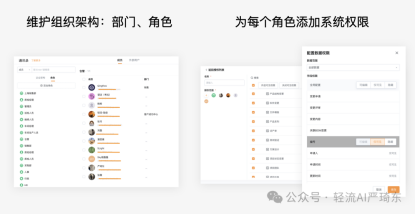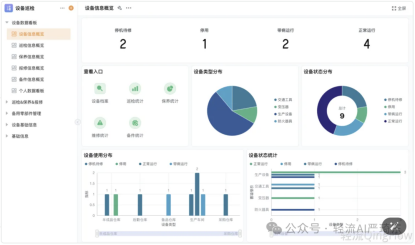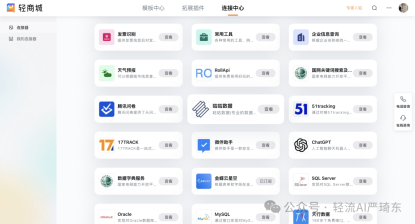A. Key Challenges in Enterprise Purchase, Sales, and Inventory Management
Businesses often encounter a series of difficulties in purchase, sales, and inventory management. These issues can disrupt the normal operation of the enterprise, leading to inefficiencies and financial losses. The main pain points include:
- Inventory data lag and inaccuracy: Many enterprises rely on manual record - keeping, resulting in untimely information updates.
- Severe inventory backlog: Due to inaccurate market demand forecasting, companies may over - purchase or over - produce.
- Difficulty in inventory counting: Unscientific counting methods and non - standardized processes lead to inaccurate results.
- Disconnection between different business modules: For example, the sales department may not be well - coordinated with the inventory and finance departments.
- Inefficient order processing: Slow order approval and fulfillment processes can lead to customer dissatisfaction.
In summary, these pain points in enterprise purchase, sales, and inventory management are interrelated and can have a significant negative impact on the overall performance of the enterprise.
B. Case Analysis of Pain Points
1. Inventory data lag and inaccuracy
Inventory data lag and inaccuracy can cause significant problems for enterprises. In daily operations, when goods are received or shipped, if the data is not immediately entered into the system, the inventory ledger will deviate from the actual inventory. This can lead to incorrect purchasing decisions, such as over - purchasing or under - purchasing. For instance, a small - scale warehouse may be so busy that workers only enter the day's inbound and outbound data the next day. By then, the inventory data no longer reflects the real situation.
For example, a small electronics retailer often faced stock - out situations because their inventory data was not updated in a timely manner. They would place orders based on the outdated data, resulting in missed sales opportunities and dissatisfied customers.
2. Severe inventory backlog
Lack of accurate market demand forecasting often leads to severe inventory backlog. Enterprises may over - estimate the market demand and produce or purchase excessive goods. In the fashion industry, if a company misjudges the seasonal trends and produces a large number of unpopular clothing styles, these items will pile up in the warehouse. This not only ties up a large amount of capital but also incurs additional storage costs. Moreover, as time passes, the value of these out - of - fashion clothes will decline significantly.
For example, a clothing manufacturer produced a large quantity of winter coats based on an over - optimistic sales forecast. However, due to a mild winter, the sales were far below expectations, leaving a large amount of inventory that could only be sold at a deep discount.
3. Difficulty in inventory counting
Inventory counting is a crucial process for enterprises, but it can be very challenging. In large warehouses with a wide variety of goods, if the counting is not carried out in a scientific and standardized manner, it is easy to have double - counting or missed - counting situations. This not only wastes a lot of manpower and time but also fails to accurately reflect the actual inventory situation.
For example, a large - scale logistics warehouse once conducted an inventory count without a proper plan. Workers randomly counted the goods, resulting in a chaotic process. After days of hard work, the counting results were still inaccurate, and the management could not make reliable decisions based on these results.
4. Disconnection between different business modules
The disconnection between different business modules can lead to inefficiencies and errors. In an enterprise, the sales department, inventory department, and finance department need to work closely together. However, in many cases, there is a lack of effective communication and data sharing between these departments. For example, the sales department may promise customers a certain delivery date without considering the actual inventory level, leading to order delays.
For example, a manufacturing company's sales team made a large number of sales commitments without consulting the inventory department. As a result, when it came to order fulfillment, they found that the inventory was insufficient, causing customer complaints and potential loss of business.
5. Inefficient order processing
Inefficient order processing can have a negative impact on customer satisfaction and business performance. A slow order approval process can delay the delivery of goods, and a complex fulfillment process can lead to errors. In some enterprises, orders need to go through multiple levels of approval, which takes a long time.
For example, an e - commerce company had a very cumbersome order processing system. Customers often had to wait for a long time for their orders to be approved and shipped, which led to a high rate of order cancellations and a decline in customer loyalty.
C. Product Introduction
1. Traditional ERP Systems
Traditional ERP systems are comprehensive management software that integrates various business processes such as finance, human resources, and supply chain management. They can provide a unified platform for enterprises to manage their resources. These systems can help enterprises standardize business processes, improve data accuracy, and enhance overall management efficiency. However, traditional ERP systems also have some limitations. They are often expensive to implement and maintain, and the customization process can be complex and time - consuming. Additionally, they may not be flexible enough to adapt to the rapid changes in the market.
2. Warehouse Management Systems (WMS)
Warehouse Management Systems are specifically designed to manage warehouse operations, including inventory control, order fulfillment, and shipping. They can improve the efficiency of warehouse operations by optimizing storage space, reducing picking errors, and speeding up order processing. WMS can also provide real - time inventory visibility, enabling enterprises to make more informed decisions. However, WMS may not be fully integrated with other business modules outside the warehouse, such as sales and finance.
3. No - code Platform: Wingent
Wingent is a no - code platform that can effectively address the pain points in enterprise purchase, sales, and inventory management. It offers a flexible and customizable solution that can be quickly deployed and adapted to the specific needs of different enterprises.
D. How Wingent Solves the Pain Points in Purchase, Sales, and Inventory Management
Wingent is a powerful no - code platform that can efficiently solve the pain points in enterprise purchase, sales, and inventory management. It provides a range of features and functions to optimize business processes and improve overall efficiency.
1. Real - time and Accurate Inventory Data Management
Wingent enables real - time and accurate inventory data management. It supports barcode scanning and other automated data collection methods, allowing inventory data to be updated immediately when goods are received or shipped. This ensures that the inventory ledger always reflects the actual inventory situation.

As shown in the figure, Wingent's system supports fine - grained permissions. Warehouse personnel can only perform inbound and outbound record operations, which ensures the security and accuracy of inventory data. By using Wingent, enterprises can reduce inventory errors by up to 30%, improving the accuracy of purchasing and sales decisions.
2. Inventory Optimization and Backlog Reduction
Wingent uses advanced analytics and forecasting algorithms to help enterprises optimize inventory levels and reduce backlog. It can analyze historical sales data, market trends, and other factors to provide accurate demand forecasts. Based on these forecasts, enterprises can adjust their purchasing and production plans in a timely manner, avoiding over - stocking.

As the picture shows, Wingent's intelligent spare parts management system can use big - data analysis technology to accurately predict spare parts inventory requirements. This helps enterprises reduce inventory costs by about 10% while ensuring that they have enough inventory to meet customer demand.
3. Efficient Inventory Counting
Wingent simplifies the inventory counting process. It provides a user - friendly interface and a set of standardized counting procedures. Enterprises can divide the warehouse into different areas and conduct counting in batches, which reduces the risk of double - counting or missed - counting.

As illustrated in the image, Wingent can also integrate with other warehouse management tools, such as barcode scanners and RFID readers, to further improve the efficiency of inventory counting. With Wingent, the time required for inventory counting can be reduced by up to 50%.
4. Seamless Integration of Business Modules
Wingent's connector module enables seamless integration with existing systems, such as ERP and MES. It can synchronize data between different systems in real - time, ensuring that all business modules work in harmony.

As shown in the picture, by integrating the financial data in the ERP system into Wingent, the system can automatically generate cost accounting reports, reducing the workload of manual data entry and accounting, and improving the accuracy and timeliness of financial data. This integration can improve the overall efficiency of the enterprise by about 20%.
5. Streamlined Order Processing
Wingent streamlines the order processing workflow. It provides a centralized platform for order management, from order placement to fulfillment. Orders can be automatically routed to the relevant departments for approval and processing, reducing the approval time and improving the order fulfillment rate.

As shown in the figure, Wingent can also provide real - time order tracking, allowing customers and enterprises to monitor the status of orders at any time. This can improve customer satisfaction by up to 25%.
In conclusion, Wingent effectively solves the key pain points in enterprise purchase, sales, and inventory management, including inventory data issues, backlog problems, counting difficulties, module disconnection, and inefficient order processing. It provides enterprises with a comprehensive, efficient, and flexible solution to improve their competitiveness in the market.
Enterprise purchase, sales, and inventory management are crucial for the success of any business. The pain points such as inventory data inaccuracy, backlog, counting difficulties, module disconnection, and inefficient order processing can significantly affect the enterprise's performance. However, with the help of advanced solutions like Wingent, enterprises can overcome these challenges. Wingent offers real - time data management, inventory optimization, efficient counting, seamless module integration, and streamlined order processing, enabling enterprises to improve their efficiency, reduce costs, and enhance customer satisfaction.
Reference [1] 1小时,我用轻流搭建了一套生产进销存系统 https://mp.weixin.qq.com/s/EnvzmggTgM9cSDqZtVSJ3Q [2] 货品分类、库存盘点、扫码出入库、数据看板;仓储全流程管理怎么做? https://mp.weixin.qq.com/s/ZWBL2jxdNDRejwfHumD5Tw [3] 生产设备管理:一全、二实、三预、四驱、五联 https://mp.weixin.qq.com/s/slh_SRaDdwl07yYTLHcPUg [4] 3000字把怎么做设备档案、巡检、报修、保养讲清楚了 https://mp.weixin.qq.com/s/uxhoGdjN9JrN3XGpw6XDMA